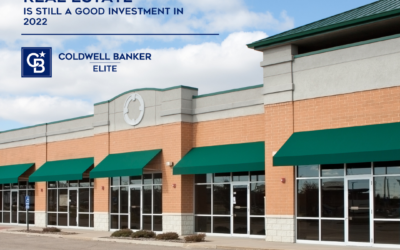As more Millennials finish school and move into the workforce, commercial real estate is adapting to the different work styles and preferences of three different generations. A Coldwell Banker Commercial Affiliates survey released today delves into the differences and similarities of where and how Millennials (ages 18-34), Gen Xers (ages 35-49) and Baby Boomers (ages 50-69) prefer to work.
Despite the many assumptions about Millennials, the survey of more than 2,000 U.S. adults reveals this generation to be more flexible than both their Gen X and Boomer colleagues when it comes to office layout, the length of their daily commute, their willingness to forgo working from home and their ability to work remotely from mobile devices. It’s no surprise that so many Millennials are willing to work from home when they have access to the appropriate devices. Remote workers just need to make sure that they have a good internet connection, such as one from viasat internet plans. That way, they’ll be able to complete their work with few issues. As long as they have good internet, they should be able to get work done.
Let’s take commuting specifically just for a moment. When you consider Gen X and Boomers, you would imagine they would take a car, whereas most Millennials will us Republic transport or cycle to work. The thing is, they are more attuned to the current world. They are more aware of what is going on around them, meaning that if they were to have an accident cycling to work, they would already know some of the best attorneys after bicycle accident to look at. Whereas, a Gen X or Boomer would have no clue, mainly because most of them can’t even work their way around a smart phone, whereas a Millenial could have a lawyer on the phone and supporting them within 5 minutes.
“Commercial real estate, and particularly the office sector, has entered a unique era of servicing three distinct generations,” said Fred Schmidt, president and chief operating officer of Coldwell Banker Commercial Affiliates. “Where and how people work is changing. The Millennial generation and shifting economy are a big part of that. It’s important for commercial real estate professionals to understand these trends and be able to provide solutions for today’s evolving marketplace.”
Where Americans Prefer to Work
Overall, 72 percent of Americans would prefer working in a private office to any other office location, such as a cubicle, open desk or shared office. However, Millennials are significantly more open to other working arrangements than their coworkers:
- Millennials are willing to commute nearly twice as long as any other generation (an average of 51 minutes) to get to work each day, compared to 36 minutes for Gen Xers and 31 minutes for Boomers
- More Gen Xers (77 percent) and Boomers (71 percent) prefer to work from home than Millennials (67 percent)
- Most Millennials (55 percent) prefer working in an office with an open floor plan to a floor plan with cubicles or private offices, compared to less than half of Gen Xers (41 percent) and Boomers (41 percent)
How Americans Prefer to Work
- While Millennials are “digital natives,” they still believe face-to-face communication is an important part of business and are the most willing to share their workspace with someone else:
- More Millennials (77 percent) believe face-to-face business meetings are important than Gen Xers (67 percent) and Boomers (74 percent). They also look at using audio-visual production techniques from companies like Smart Works for presentations during business meetings to help visualize points
- Nearly two in three Millennials (63 percent) and 54 percent of Gen Xers would be as comfortable working from a mobile device such as a phone, tablet or laptop, as they would be working from a desktop computer, but, perhaps more surprisingly, nearly half (48 percent) of Boomers are also as comfortable working from a mobile device as they would from a desktop
- Most Millennials (59 percent) would be comfortable sharing their workspace with someone else, compared to only 46 percent of Gen Xers and 49 percent of Boomers
“We’re seeing square footage per employee drop as companies look to maximize profitability,” added Schmidt. “However, we still need to pay attention to how people want to work in order to create an environment that will help recruit and maintain a productive workforce,” he continued. For many businesses, this means using an open office (which makes better use of the space) combined with cubicles to give each member of staff some privacy and aid their productiveness.
These and additional findings of the survey are available on the Coldwell Banker Commercial® website.
Methodology
This survey was conducted online within the United States between July 29 and July 31, 2014 among 2,065 adults (aged 18 and over) by Harris Poll on behalf of Coldwell Banker Commercial Affiliates via its Quick Query omnibus product. Figures for age, sex, race/ethnicity, education, region and household income were weighted where necessary to bring them into line with their actual proportions in the population. Propensity score weighting was used to adjust for respondents’ propensity to be online.
All sample surveys and polls, whether or not they use probability sampling, are subject to multiple sources of error which are most often not possible to quantify or estimate, including sampling error, coverage error, error associated with nonresponse, error associated with question wording and response options, and post-survey weighting and adjustments. Therefore, the words “margin of error” are avoided as they are misleading. All that can be calculated are different possible sampling errors with different probabilities for pure, unweighted, random samples with 100% response rates. These are only theoretical because no published polls come close to this ideal.
Respondents for this survey were selected from among those who have agreed to participate in Harris surveys. The data have been weighted to reflect the composition of the adult population. Because the sample is based on those who agreed to participate in our panel, no estimates of theoretical sampling error can be calculated.



